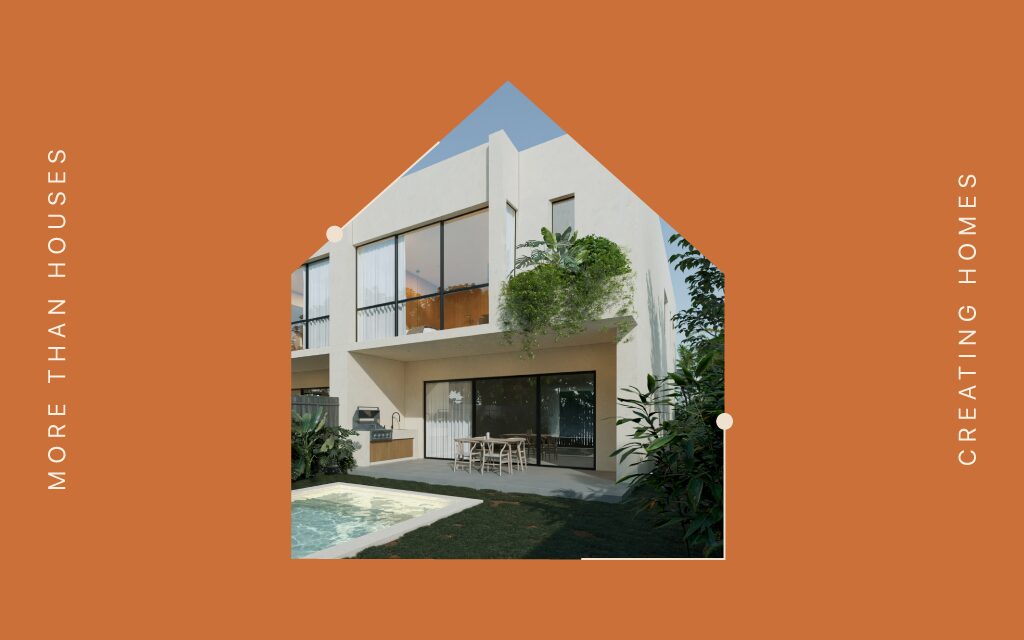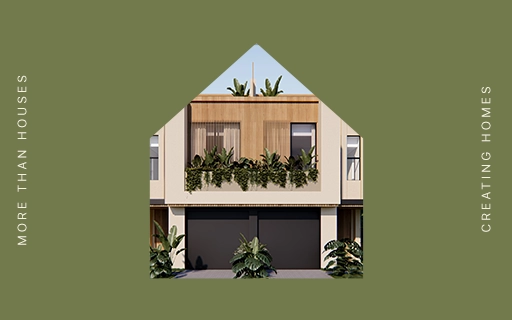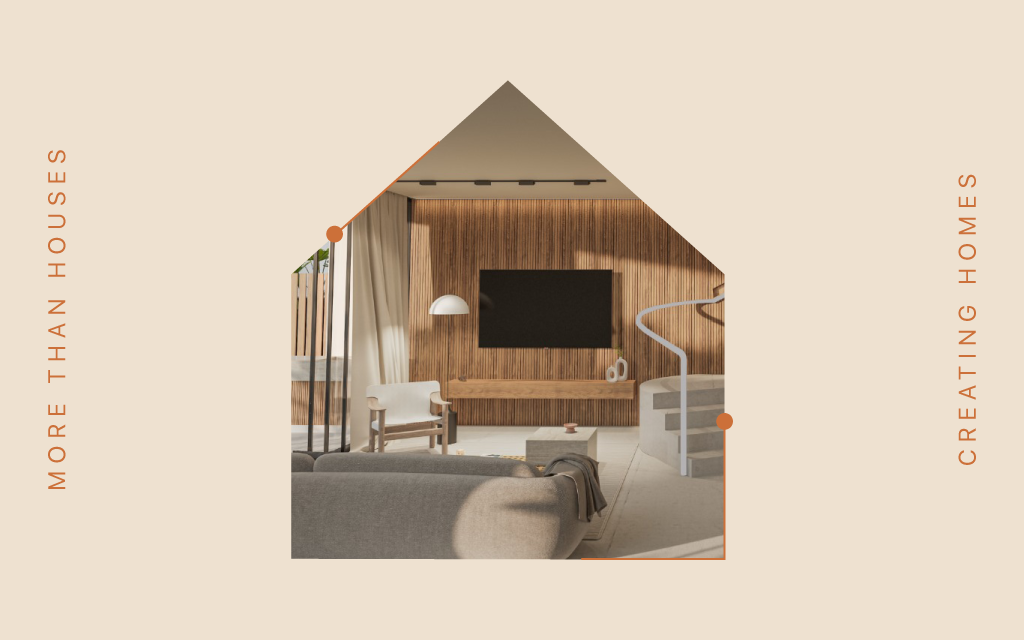Choosing a new home is one of the most important decisions you’ll ever make- but is not just about the house itself. The neighborhood where the house of your dreams is located, will also shape your daily life, your comfort and even your long term well-being. From the schools nearby to the community’s vibe, the presence of nature, and the local facilities, every detail matters for long- term happiness.
At DCR Homes, we believe a home is where life truly happens. That’s why understanding how to evaluate a neighborhood when buying a home goes far beyond market data or location trends- it’s about finding a place where you truly see yourself and that confirms how you want to live.
Therefore, in this article, we’ll walk you through everything you need to know to make an informed and emotionally fulfilling choice about your new neighborhood.
What’s a Neighborhood and Why It Matters so much
When people think about buying a home, they tend to focus on square footage, design or price, but what truly defines your experience in a new place is the neighborhood around you. It may not be popular to say it, but what makes a home special are the experiences, the life that surrounds you.
A neighborhood is more than just a cluster of streets and houses. It’s the life that resounds every day, the feeling of safety when you walk at any hour, the sound of children playing nearby, and the comfort of knowing everything you need is close by.
A neighborhood that suits you, shapes your quality of life. It influences your daily routines, social circle and contributes to your wellness. So, asking yourself “Where do I want to live?” isn’t only a practical question, it’s more profound and personal. Do you want a quiet family-friendly area, a vibrant young and urban district or a community full of nature and light?
At DCR Homes, we design each residential project with that question in mind. Every development in South Florida is built to encourage connection, comfort, and a sense of belonging— values that transform a simple address into a genuine home.
How to Pick a Neighborhood That Matches Your Lifestyle
Discovering a place that feels like home starts with understanding your lifestyle and priorities. For example, do you need proximity to schools, green spaces or easy access to major highways for work?
Listing your no negotiable lifestyle comfort points orientates the neighborhood style you are looking for. Maybe you value a peaceful environment where you can unwind after a busy day, or perhaps you prefer an active community with a lot of life with shops, restaurants etc. An online tool like TCHabitat.org can help you compare distinct areas and find communities that align with your goals.
Here’s a simple way to start:
- 1. Identify your lifestyle needs. Think about what defines your routine — schools, work commute, parks, shopping, or nightlife.
- 2. Research local data. Look for safety statistics, property value trends, and community reviews on trusted platforms like TCHabitat.org or Realtor.com.
- 3. Visit at different times. Walk or drive through the area during the day and at night to understand its real rhythm.
- 4. Talk to locals. Neighbors can reveal insights no online guide can provide.
- 5. Consider the long term. The right neighborhood should support your growth, whether you plan to raise a family or invest in property value.
At DCR Homes, we design homes in South Florida’s most promising neighborhoods — places that blend comfort, design, and sustainability. Each project is developed with your daily life in mind, so you can focus on what truly matters: creating memories in a space that reflects who you are.

How to Evaluate a Neighborhood When Buying a Home
When you are investing in a property, analyzing the neighborhood where you want to live can make all the difference between a smart decision or a costly mistake. The reason is, beyond the beauty of a house lies the real value of its surroundings like safety, community, accessibility and long-term growth potential.
Here are some key factors to consider when assessing a neighborhood:
- 1. Safety and crime rates: Check reliable data from local authorities or websites like NeighborhoodScout or USA Today. Remember, a safe area not only offers you peace and protects your family but also supports property value stability.
- 2. Education and schools: If you have children or you’re planning to, the quality of nearby schools will be essential for choosing a neighborhood. We recommend using sources like GreatSchools.org to compare ratings.
- 3. Local economy and job opportunities: A thriving local economy contributes to the neighborhood’s resilience. Look for growing business areas, upcoming developments, or infrastructure projects.
- 4. Accessibility and transportation: Proximity to highways, public transit, and major hubs like airports can significantly increase convenience and resale value, but also can make your life routine easier.
- 5. Lifestyle and community: Check what are the surroundings of your neighborhood. Visit local cafés, parks, and cultural spots nearby and check if the community’s rhythm is aligned with how you picture your daily life.
At DCR Homes we have mastered the art of selecting prime locations that balance comfort, accessibility, and sustainability for each profile. With an exhaustive neighborhood analysis, we ensure residents enjoy both peace of mind and long-term value. Get in touch with our team!
Choosing a Home Within Its Context
When evaluating a property, beauty and functionality often catch the eye first, but what makes it worth it, lies in how the home harmonizes with its surroundings. Therefore, true harmony is achieved when the architecture, design and environment suits perfectly with both privacy and community life.
Also, great design is inherently contextual. An exceptional property does not isolate itself; it belongs. This means its architecture must be a continuation of the neighborhood’s narrative, acting as a perfect reflection of the local context.
Sustainability plays a defining role, too. Homes built with energy efficient material, smart insulation and water conscious systems do much more than just conserve resources. They actively enhance daily comfort, reduce long-term operational costs, and future-proof your investment. When evaluating a home, consider how sunlight enters the space, how air circulates and natural light illuminates the space. These are signs of a home built for both people and place.
We know at DCR Homes that every development should be a conversation between architecture and environment. Therefore our projects integrate harmony between their surroundings, balancing elegance with practicality.
Gathering Information About Your Neighborhood
Reliable information about your neighborhood helps you see beyond appearances and evaluate how a community will evolve over time. Here are some public data sources that reveal how a neighborhood functions in real terms:
- U.S. Census Bureau: Provides data on demographics, household types and growth trends, vital for understanding community dynamics.
- City-Data.com: Get detailed statistics on demographic and economic factors, such as crime rates, income levels, and housing patterns across U.S. cities.
- NeighborhoodScout: An excellent tool for knowing the zone educational systems and assessing schools.
- TCHabitat.org: Provides practical insights on evaluating valuable insights for analyzing the quality of life and sustainability perspective.
Finding a Neighborhood That Feels Like Home
Choosing where to live is one of the most personal and transformative decisions you can make. It’s not only about how to evaluate a neighborhood when buying a home — it’s about recognizing where your story will unfold.
The perfect neighborhood balances community, sustainability, comfort, accessibility and connection, while the right home transforms those qualities into daily comfort and wellness. So when you ask yourself “Where do I want to live?” think beyond a location, think of a sense of belonging.
Explore our current projects in South Florida at dcr-homes.com and take the first step to discover your true space. DCR: Contributing to building fairer, more sustainable, resilient, and equitable cities.




